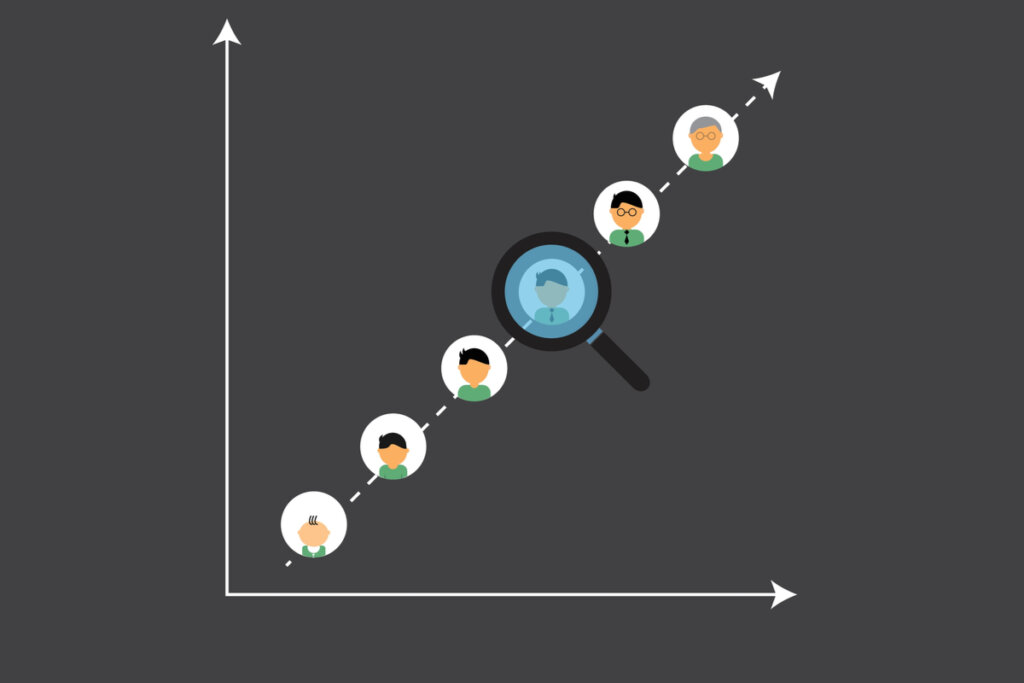Longitudinal Studies: What Are They?

Longitudinal studies allow observations to be made, in a sequenced manner, of the transformation or evolution of the phenomenon being studied. They’re widely used in various fields of knowledge, such as medicine, psychology, and sociology.
This type of study requires monitoring of the variables being analyzed. The length of time is determined by the researcher. In fact, the studies can last for weeks, months, years, and even decades.
Longitudinal studies
Longitudinal studies are a type of observational (non-experimental) design that analyzes changes in certain categories, concepts, events, variables, contexts, or communities over time. They collect data at different moments or time intervals in order to make inferences regarding the evolution of the subject of the study, its determinants, and its consequences (Hernández-Sampieri, Fernández & Baptista, 2014).
Other authors, such as Visser (as cited in Arnau and Bono, 2008), affirm that a longitudinal study consists of examining the changes that occur, over time, in the same sample of subjects and verifying the interindividual differences in the intra-individual changes. In other words, they study the change processes directly associated with the passage of time (Arnau and Bono, 2008).
Longitudinal studies investigate and evaluate the same sample over a period of time (Myers, 2006). The central idea isn’t in the number of variables studied. In fact, it’s in time, evolution, and the respective changes of the object of investigation. For instance, these kinds of studies could be used to:
- Analyze the changes in attitude toward euthanasia over a period of ten years in an urban community.
- Study the relationship between physical activity and aging in a sample of 40-year-olds over a five-year period.
- Observe how a peasant community develops over the years, with the arrival of the Internet in their lives.

Characteristics of the longitudinal study
The main characteristic of the longitudinal study, as previously stated, is that data collection is carried out at various times. Indeed, unlike cross-sectional studies, where data is collected in a single moment, in longitudinal studies, it’s done at several different times. This form of collection distributed over time allows researchers to identify any changes.
Observations are always made on the same object of study, be it a phenomenon, community, or person. Furthermore, it’s important that the sample is the same at all times. Obviously, it may change over time, since change is a vital constant. Nevertheless, what’s sought is that each time measurements or observations are made, the sample is maintained.
Another characteristic of longitudinal studies is that they allow the researcher to capture intraindividual or intragroup differences. The main objective of this type of design is to observe the evolution and change that the study variables have sustained during a certain period of time. For this reason, the respective variations that have occurred in the sample are analyzed.
Finally, based on the objectives of the longitudinal data analysis of Arnau and Bono (2008), it can be affirmed that another characteristic of these designs is that they provide information on interindividual differences, on the relationship between intra- and interindividual changes, and on the variables that influence their variations.
Types of longitudinal studies
Longitudinal studies are divided into three types. These are retrospective studies, cohort studies, and panel studies.
Retrospective studies
Retrospective studies analyze the changes over time in categories, concepts, variables, or their relationships of a specific population (Hernández-Sampieri, Fernández & Baptista, 2014).
The central feature of this design is that it focuses exclusively on the population or universe and not on the samples. For example, it could involve conducting a study to analyze the change in perception about abortion in university students in a particular city.
Cohort studies
Cohort studies examine changes in specific subpopulations or groups. Their focus is on groups of individuals with a common characteristic.
These studies track groups over time and, in general, a sample is drawn each time data on the group or subpopulation is collected – instead of including the entire subpopulation (Hernández-Sampieri, Fernández, and Baptista, 2014). It’s important to note that, although the sample can be changed, it’s not configured with elements that don’t belong to the group or subpopulation studied.
Panel studies
Panel studies are similar to cohort and retrospective studies. However, in these cases, the same participants or events are measured or observed at different points in time.
For example, observing a group of depressed patients on a monthly basis for one year. The aim here might be to analyze whether their positive expectations of the future increase and their negative ones decrease. In each observation, the patients are the same people.

Advantages and disadvantages of longitudinal studies
There are several reasons why an investigator may conduct a longitudinal study. Next, we discuss the advantages and disadvantages of this type of design.
Advantages
- Because the study is carried out in the long term, its authenticity is verified beforehand. This means the results have a higher level of validity.
- Long-term relationships can’t be discovered in a short-term investigation. However, short-term relationships can be monitored in a long-term investigation. This allows a wider margin to examine the changes and thus better understand the evolution of the variables.
- Longitudinal studies enable trends and relationships to be discovered within collected data in real-time.
- These kinds of studies allow researchers to be flexible. This isn’t possible with other research formats.
Disadvantages
- The main disadvantage of longitudinal designs is that research is more likely to provide unpredictable results.
- It may take a long time before the data begins to produce observable patterns or relationships that can be monitored.
- The initial sample may be lost over time.
- To develop relationships or patterns, a large amount of data must be collected and extracted.
- The longitudinal design tends to be more complex and expensive. By requiring more time, more resources are required. Therefore, it’s possible that investment and expenses will be higher.
In this article, we’ve discussed a type of study that’s frequently used in research to describe changes. As a matter of fact, researchers have discovered some curious phenomena with this kind of research. One such example is the Flynn effect.
All cited sources were thoroughly reviewed by our team to ensure their quality, reliability, currency, and validity. The bibliography of this article was considered reliable and of academic or scientific accuracy.
- Arnau, J., & Bono, R. (2008). Estudios longitudinales. Modelos de diseño y análisis. Escritos de Psicología, 2, 32-41. https://scielo.isciii.es/pdf/ep/v2n1/original3.pdf
- Hernández-Sampieri, R., Fernández, C. y Baptista, M. (2014). Metodología de la investigación(6ª Ed.). McGraw-Hill Interamericana.
- Myers, D. (2006), Psicología 7ma edición. Editorial Médica Panamericana:Madrid
This text is provided for informational purposes only and does not replace consultation with a professional. If in doubt, consult your specialist.








